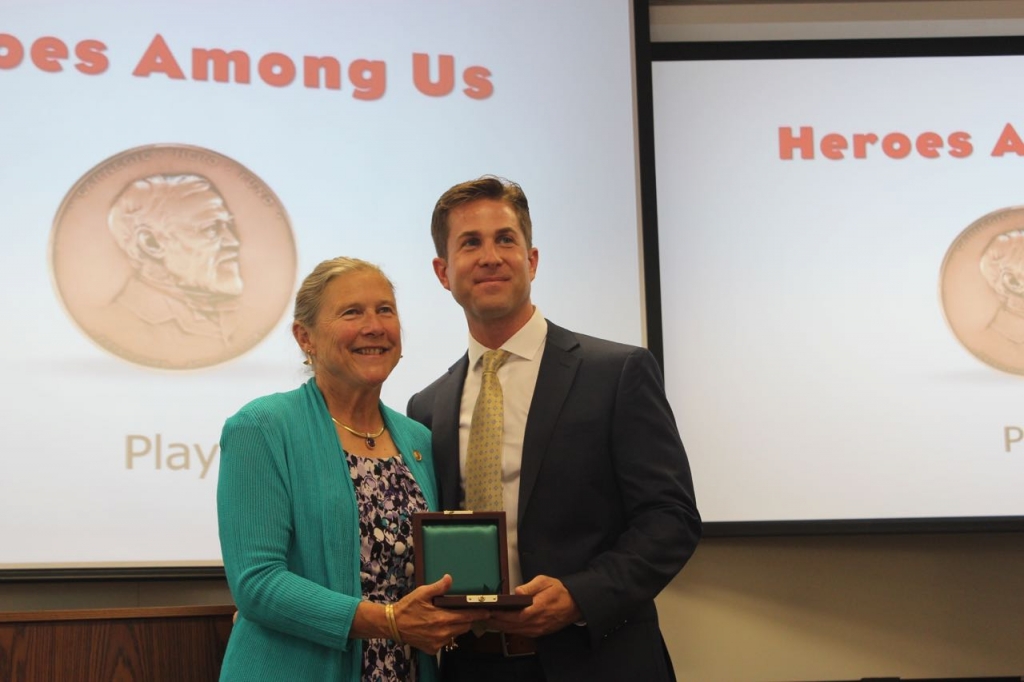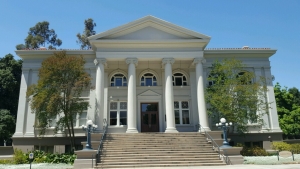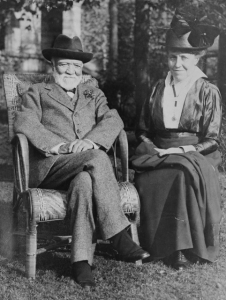Aspects of Carnegie’s legacy unite at hero’s recent Carnegie Medal presentation



All things “Carnegie” came together spring 2017 when Nathan Ryan Reynolds was presented his Carnegie Medal in Carnegie Hall on the campus of Pomona College, Claremont, Calif., by one of Carnegie’s great-grandchildren, Linda Thorell Hills, a member of the Hero Fund’s board. The event took place on April 22, 2017, which happened to be the 130th wedding anniversary of Andrew and Louise Whitfield Carnegie.
The venue was a natural, as Reynolds is a resident of Claremont and Hills is a graduate of Pomona. The hall was originally a library, funded in 1905 by Carnegie, one of only two academic libraries in California given by him. The building now houses social services offices and classrooms.
It was a special day for Reynolds, whose award was announced in December. He and his family and friends gathered in a classroom for the presentation by Hills, who was accompanied by her son, Scott, one of the donor’s 32 “great-greats.” Reynolds later noted that there were “several teary eyes in the audience,” as the Hero Fund’s accompanying video highlighted the “gravity of the (heroic) acts.” Regarding his own heroic actions, Reynolds said, “We were all very lucky that day. I’m very fortunate that everything turned out the way it did and that everyone was OK.”
Reynolds’s heroism took place on Jan. 20, 2015, in Marina, Calif., where he was working as a hydrogeologist. Then 35, he witnessed a sedan driven by a 75-year-old woman enter a retention pond and begin to sink nose-first in the cold, murky water. The woman’s 9-year-old great-granddaughter was in the backseat, and neither could swim.
Reynolds immediately ran to the bank, kicked off his boots, and entered the 6-foot-deep pond, despite signs on its bank warning, “high bacteria count, no water contact.” He waded and swam 45 feet to the middle of the pond, reaching the driver’s door of the car, and instructed the woman to roll down her window. When she did so, the young girl moved to the front seat, and Reynolds helped her through the window and positioned her onto his back. He swam her to the bank and then returned to the car, which was continuing to submerge as it drifted toward the opposite bank. Securing a hold of the driver, Reynolds started toward the closer bank, progressing with difficulty and submerging. Police officers arriving about then aided the woman from the water, Reynolds following, nearly exhausted.
Hills, of Littleton, Colo., commented on Reynolds to a reporter: “Some of our species are imbued with this ability to act with no notice at all and be able to save someone, and Nathan, he clearly is delightful.”
She said that the presentation was also special for her, since it took place on her great-grandparents’ wedding anniversary. The couple were married Friday evening, April 22, 1887, at Louise Whitfield’s family home in Manhattan in a simple ceremony with no bridesmaids and no best man present, according to Carnegie biographer David Nasaw. Afterwards, the couple went to a steamer pier in Hoboken, N.J., from which they set sail for Southampton, England, on their honeymoon.
The day is especially significant in understanding Carnegie’s philanthropy. Nasaw writes in Andrew Carnegie (The Penguin Press, New York, 2006): “Just moments before they exchanged their vows, Andrew and Louise repaired to the second-floor sitting room of the Whitfield house to sign their ‘prenuptial agreement.’ In return for an annual income of $20,000 (more than $3 million today), Louise gave up her rights to her husband’s estate.” Nasaw reports (p. 297) that the agreement declared that Carnegie “desires and intends to devote the bulk of his estate to charitable and educational purposes, and said Louise Whitfield sympathizes and agrees with him in said desire, and fully approves of said intention.”
“Her husband was going to give away his fortune during his lifetime,” Nasaw writes, “and she was going to help him.” (See Board Notes.)
Return to imPULSE index.
See PDF of this issue.

